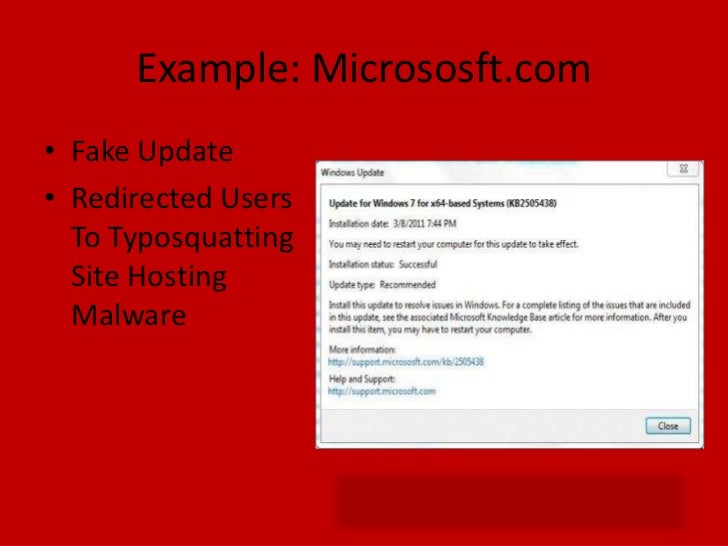

When people click on one of these links and enter their information, it’s sent directly back to the typosquatter who may use it for illegitimate activities like credit card fraud or selling the victim’s personal information on blackhat forums.The typosquatter tricks users into clicking on links in the emails, which directs them to the typosquatted website that might be hosting malware or deceiving users to enter their personal information.The typosquatter sends marketing emails to people, convincing them that they are receiving real messages from a business or organization that they trust.The typosquatter registers a matching email address.The typosquatter registers a matching domain name.Here’s how a typosquatter might typosquat: They often use specific colors, fonts, logos, and themes to make their sites look like they belong to an actual company. To avoid detection, typosquatting sites often try to look like they’re part of a larger organization or business.

The typos are meant to trick people into thinking they’re visiting the real site. Typosquatting involves setting up a website that’s almost identical to the real site, but with typos in the URL address. Typosquatting can be used for a variety of reasons: to trick people into thinking they’re accessing the original site, to take advantage of Google’s rankings algorithms, and even just because the owner wanted to use that domain name. In most cases, the “typosquatter” registers a domain name that resembles a well-known trademarked or copyrighted phrase.įor example, the typosquatter might register “” to serve as an alternative to the genuine and trademarked one “.” Typosquatting is the practice of registering web addresses that are similar to the target site’s URL, with the intent of tricking users into mistyping the legitimate URL and landing on a phishing page.
EXAMPLES OF TYPOSQUATTING HOW TO
In this article, we’ll tell you everything you need to know about typosquatting, how it works and how to prevent it. The result? Users are directed to sites with malware or phishing attempts, which can lead to identity theft and other serious problems. Typosquatting is the use of misspelled domain names to deceive users into thinking that the site they’re trying to access is legitimate.


 0 kommentar(er)
0 kommentar(er)
